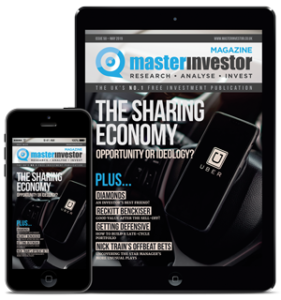How to kick-start your retirement savings plans

Robert Stephens, CFA, discusses why planning for retirement could be more straightforward than many people realise.
Planning for retirement does not need to be complicated. Various changes to pension rules over recent years mean that consumers now have greater freedom over how they choose to save and invest for older age.
Therefore, it is easier than ever to keeps things simple in order to balance everyday life with retirement planning.
Through having tax-efficient products such as an ISA or a SIPP that invest in a range of shares, it may be possible for anyone to plan more effectively for older age.
Tax-efficient products
| Master Investor Magazine
Never miss an issue of Master Investor Magazine – sign-up now for free! |
Opening an ISA or a SIPP is a low-cost and simple means of avoiding tax. Neither are subject to tax on dividends or capital gains.
ISAs can be opened online in minutes. They allow up to £20,000 to be invested per year in shares, bonds and a range of other assets. Since the amounts paid into an ISA have already been subject to income tax, any withdrawals made from them are tax-free. Withdrawals can be made at any time, which may mean they offer greater flexibility than a pension.
SIPPs can also be opened and managed online. Contributions to a SIPP benefit from tax relief, although withdrawals are taxed. Unlike an ISA, withdrawals from a SIPP can only be made from age 55, which makes them less flexible.
Neither ISAs nor SIPPs are expensive to open or manage, which makes them worthwhile for a variety of investors. They may also provide greater choice on where to invest when compared to an employee pension scheme, with them often being limited to a handful of funds.
Investing in the stock market
Even though the stock market has a long history of delivering higher returns than any other mainstream asset, investing in it remains somewhat unpopular among consumers. For instance, 72% of ISA subscriptions in the 2019 tax year were for cash ISAs, which are akin to a savings account, with just 26% of total subscriptions being in stocks and shares ISAs.
Although investing in the stock market carries a risk of capital loss, diversifying among a range of companies reduces company-specific risk. This is the potential for a stock to fall in value and hurt the performance of a wider portfolio.
One way of reducing company-specific risk is to buy units in a tracker fund. Its charges are generally less than 0.2% per year, while it can offer high returns over the long run. Tracking the FTSE 250 over the last 20 years, for example, would have turned a £5,000 investment into £28,000.
Long-term outlook
Although there will be times of volatility and disappointment when investing in the stock market, the potential returns on offer may make it worthwhile where an investor has a long-term time horizon. While taking too much risk may not be advisable, being overly cautious in terms of having cash balances rather than investing in the stock market may lead to negative returns once inflation has been factored in.
Of course, buying individual shares can lead to higher returns than those offered by the index, but with higher risk. As a result, for people who are seeking to plan effectively for retirement over the long run without requiring substantial effort, opening an ISA or a SIPP and buying units in a tracker fund may be the best way to achieve their goal.

Comments (0)